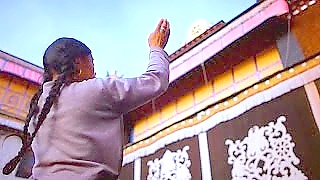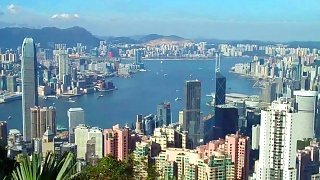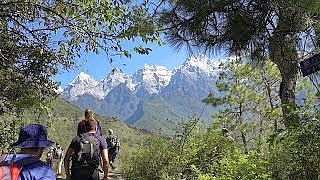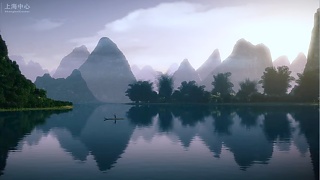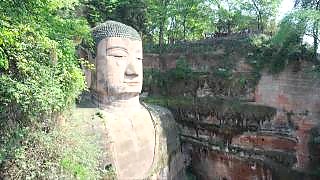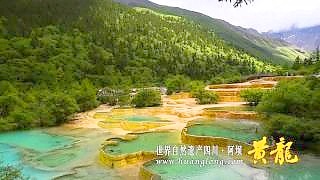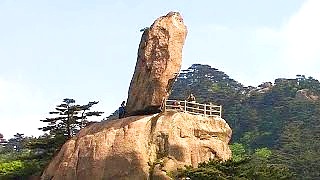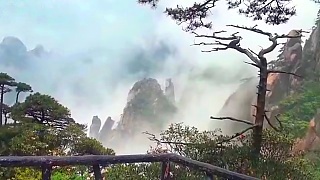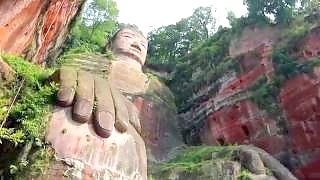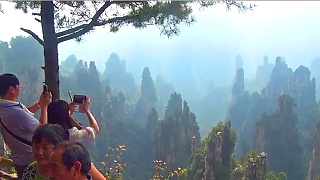 Best mountain hikes in China
Best mountain hikes in China
Mountain Hiking Trips in China
-
Huangshan 黄山 (Huángshān): Embark on an unforgettable journey to the Yellow Mountain, known for its dramatic peaks, deep valleys, and mystical beauty. Huangshan is a UNESCO World Heritage Site and has inspired countless poets and artists with its ethereal landscapes. Visitors can hike along scenic trails lined with ancient pine trees, explore hidden caves and waterfalls, and witness breathtaking views of the sea of clouds that often shroud the peaks.
-
Emei Mountain 峨眉山 (Éméishān): Explore one of the Four Sacred Buddhist Mountains of China, known for its stunning scenery, ancient temples, and diverse wildlife. Emei Mountain is home to the majestic Golden Summit, where visitors can watch the sunrise over a sea of clouds and admire the towering statue of Samantabhadra. Along the way, hikers can encounter playful monkeys, explore serene forests, and visit historic Buddhist monasteries.
-
Jiuhua Mountain 九华山 (Jiǔhuáshān): Discover the beauty and tranquility of Jiuhua Mountain, one of the Four Sacred Buddhist Mountains of China. Jiuhua Mountain is renowned for its sacred temples, including the Tiantai Temple and the Huacheng Temple, which house ancient Buddhist relics and offer stunning panoramic views of the surrounding landscape. Visitors can hike through lush forests, meditate in serene meditation halls, and immerse themselves in the spiritual atmosphere of this sacred mountain.
-
Wudang Mountain 武当山 (Wǔdāngshān): Explore the birthplace of Wudang Kung Fu and the ancient Taoist culture at Wudang Mountain. This UNESCO World Heritage Site is famous for its magnificent ancient buildings, including the Golden Hall, the Purple Cloud Palace, and the Nanyan Temple. Visitors can practice Tai Chi in the peaceful surroundings, hike through scenic valleys and forests, and explore the rich cultural heritage of this historic mountain.
-
Mount Tai 泰山 (Tàishān): Ascend the sacred Mount Tai, known as the "Eastern Mountain of the Five Sacred Mountains." Mount Tai has been a place of worship and pilgrimage for thousands of years and is renowned for its breathtaking natural beauty and cultural significance. Visitors can climb the 7,000 steps to the summit, visit ancient temples and shrines, and admire panoramic views of the surrounding landscape from the Jade Emperor Peak.
-
Mt. Hua 华山 (Huàshān): Challenge yourself with a trek up the steep and rugged trails of Mount Hua, one of China's Five Great Mountains. Known for its precipitous cliffs, narrow plank paths, and breathtaking vistas, Mount Hua offers a thrilling adventure for hikers and outdoor enthusiasts. Visitors can hike to the famous Chess Pavilion, brave the spine-tingling plank walk along the cliff face, and enjoy panoramic views from the mountain's five peaks.
-
Mount Gongga 贡嘎山 (Gònggǎshān): Explore the "King of Sichuan Mountains," known for its stunning glaciers, alpine lakes, and diverse ecosystems. Mount Gongga is one of the highest peaks in the Hengduan Mountains and offers spectacular scenery and challenging trekking opportunities. Visitors can trek through pristine wilderness, climb to high mountain passes, and enjoy panoramic views of the surrounding peaks, including the iconic Minya Konka.
-
Haba Snow Mountain 哈巴雪山 (Hābā Xuěshān): Discover the rugged beauty of Haba Snow Mountain, located on the eastern edge of the Tibetan Plateau. Haba Snow Mountain is known for its dramatic landscapes, including towering peaks, deep gorges, and cascading waterfalls. Visitors can trek through alpine meadows adorned with colorful wildflowers, cross suspension bridges over rushing rivers, and summit the snow-capped peak for breathtaking views of the surrounding landscape.
-
Jade Dragon Snow Mountain 玉龙雪山 (Yùlóng Xuěshān): Explore the stunning landscapes of Jade Dragon Snow Mountain, known for its towering peaks, deep gorges, and alpine meadows. Jade Dragon Snow Mountain is part of the UNESCO World Heritage-listed Three Parallel Rivers of Yunnan Protected Areas and is home to a rich diversity of flora and fauna. Visitors can take a cable car ride to the summit, hike along scenic trails, and admire the views of the famous "13 peaks."
-
Mt. Siguniang 四姑娘山 (Sìgūniángshān): Journey to the "Four Sisters Mountains," known for their towering peaks, alpine lakes, and pristine forests. Mount Siguniang is located in the heart of the Qionglai Mountains and is part of the UNESCO World Heritage-listed Sichuan Giant Panda Sanctuaries. Visitors can trek through scenic valleys, visit Tibetan villages, and admire the stunning beauty of the snow-capped mountains, including the four distinct peaks that give the mountain its name.
Related Videos
Featured Videos
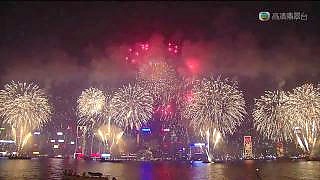
|
Wonderful ...
|

|
XiaMen No. 6 High School. FuJian province.
First song - Brightest Star in the Sky ...
|

|
With DianXi XiaoGe ...
Bonus film - wasabi ...
Bonus film - cherries ...
Bonus film - taro flowers ...
|

|
With Tim Chambers ...
By boat :
By e-bike / bicycle :
|

|
Including the evening / night light show ...
|

|
With Willene Business & Lifestyle ...
Bonus film - with Seiu Travel ...
|

|
The Western media's portrayal sounds like a pre-prepared script; part of the long-standing policy of world hegemony through 'color revolutions' destabilisations such as recently in Ukraine (and dozens more). At least, it has persisted in its propaganda for decades. The 'struggle for democracy' really means subservience to Western domination. Who is the one rewriting history?
Despite the thousands of protesters, other residents and hundreds of foreign journalists, there is no photographic evidence; the 'proof' lies only in tales.
For many weeks the government listened to the protesters but it had become overtaken by 'leaders' determined to force confrontation. About 300 (rioters and military) died a few kilometers west of the square as rioters attacked the military's approach to the square. At the square, an agreement was reached for the protestors to leave by dawn, and that's what happened, without bloodshed.
The MSM like to show us the 'tank man'. There is video too. This person climbs onto the tank, talks with the military, then again returns to being in front of the tank, which tries to go around him. Two bystanders then persuade him to leave. What we do not see - anyone getting shot or run over.
Some have grudgingly accepted that the violence took place some distance away from square, but state that the location is not important. But it is important given that for decades the tale was of a 'massacre of students in the square'; it shows the deception.
Who is the one rewriting history?
The following links have a good overview :
https://www.liberationnews.org/tiananmen-the-massacre-that-wasnt/
https://www.japantimes.co.jp/opinion/2014/06/03/commentary/world-commentary/really-happened-tiananmen/
More :
https://www.rt.com/op-ed/163872-china-tiananmen-square-june4/
https://www.cbsnews.com/news/there-was-no-tiananmen-square-massacre/
|

|
Join Trevor James, the 'Food Ranger', on an epic culinary journey ...
|

|
Tiger Leaping Gorge (虎跳峡 / HǔTiào Xiá) is a beautiful canyon on the JinSha River, a primary tributary of the upper YangTse River. It lies about 60 kilometers (38 miles) north of LiJiang in YunNan province, south west China and is part of the 'Three Parallel Rivers of Yunnan' UNESCO World Heritage Site.
Tiger Leaping Gorge is around 15 kilometers (9 miles) in length and passes between Jade Dragon Snow Mountain and Haba Snow Mountain in a series of rapids below towering 2,000 meter (6,600 feet) cliffs.
This film shows part of the lower trail and the spot where legend says a tiger jumped the rapids at their narrowest point (some 20 plus meters).
|
Tag search ?
 Best mountain hikes in China
Best mountain hikes in China
